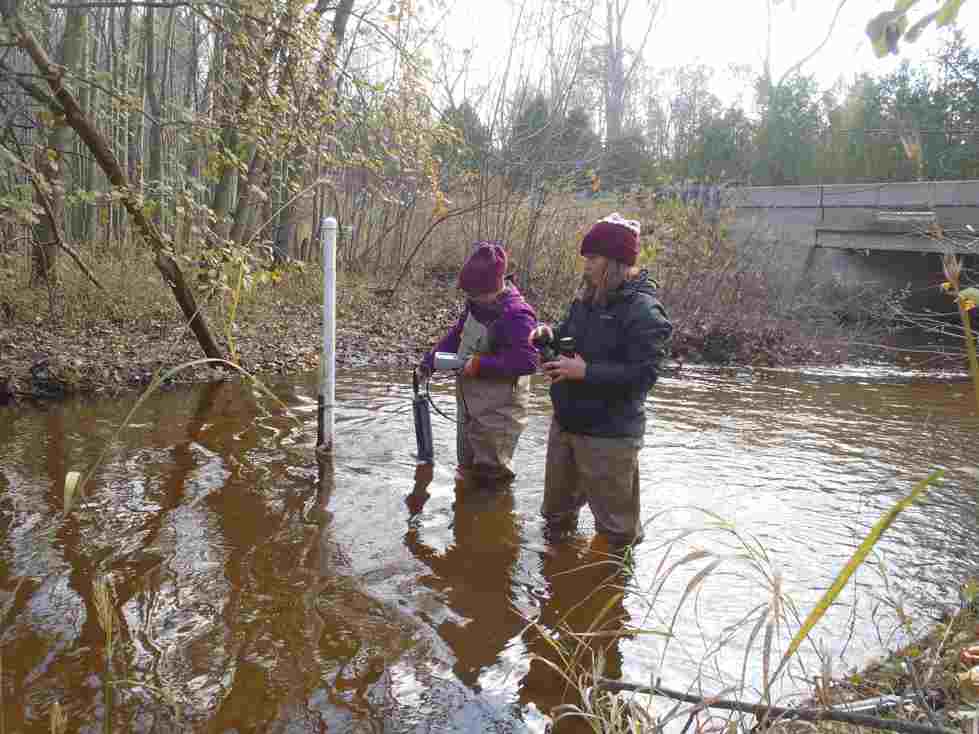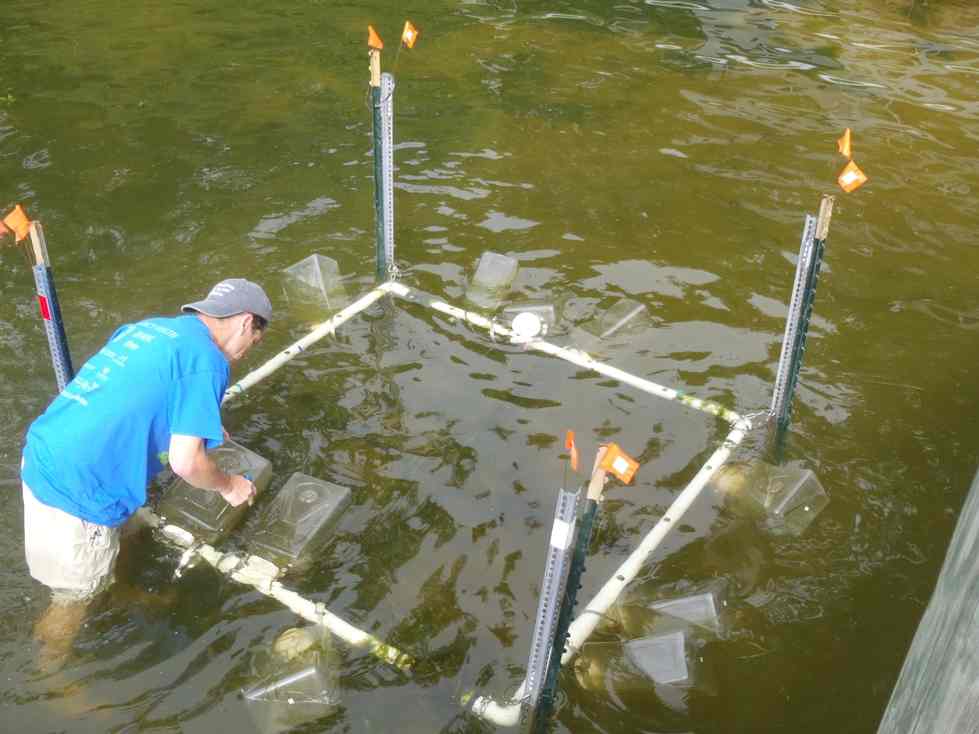Spring Lake Phosphorus Project: External Loading and Spring Lake Microcystin Study
Background
Spring Lake is a highly eutrophic west Michigan waterbody with high phosphorus concentrations that has been periodically monitored by AWRI since 2003. An analysis of internal phosphorus loading during summer/fall 2016, 11 years after an alum treatment, revealed conflicting results as to whether the alum was starting to lose its effectiveness (Steinman et al. 2017). Phosphorus release rates from incubated sediment cores were relatively low and similar to rates measured in 2010. However, extremely high total phosphorus (TP) concentrations (350 and 1,000 µg/L) were measured at two deeper sites; these concentrations were ~16× to 40× greater than the recommended TP concentration of 25 µg/L.
Given these high P concentrations in the water column of Spring Lake, there is concern that high P loads may be entering Spring Lake from the watershed. As a consequence, AWRI was funded to monitor nutrient loads from the main tributaries to Spring Lake. Additionally, with the increasing frequency of cyanobacterial blooms in Spring Lake, there is concern about potential toxicity from the cyanotoxin microcystin, which was also measured in this current study.
Spring Lake Tributary Water Quality Monitoring: 2017-2018
Tributary sites for sample collection throughout the upper Spring Lake watershed were established and monitored once monthly at baseflow conditions for water quality and stream flow in order to create an estimate of external nutrient loading into Spring Lake. Additional sampling events occurred during periods of higher streamflow caused by storm and snowmelt events.

Sampling water quality in the Spring Lake watershed.
Spring Lake Microcystin Experiment: 2017
Conducted in June 2017, the goal of this bioassay experiment was to measure microcystin and chlorophyll a concentrations to determine whether the phytoplankton community is limited by nitrogen and/or phosphorus concentrations. Spring Lake water was collected and contained within carboys that were secured to a large frame and anchored in waist-deep water. In addition to carboys filled only with natural water from the lake as experimental controls, other carboys contained lake water amended with nitrate, phosphate, or a combination of both nitrate and phosphate. Water samples from all of the carboys were collected before and after a 1-week incubation period.

Setting up the microcystin bioassay experimental array.
Spring Lake Microcystin Monitoring: 2017
During four sampling events from July – August 2017, near-surface and near-bottom Spring Lake water column samples from two lake sites were collected and analyzed for microcystin and chlorophyll a concentrations, along with other water quality parameters.
[1521219802].jpg)
Preparing to collect water column samples in Spring Lake.
Funding for this project is provided by the Spring Lake – Lake Board.
Project Products
Project Partners
Progressive AE
The Steffel Family
References
Steinman, A.D., and M. Hassett. 2017. Internal Phosphorus Loading in Spring Lake 11 Years Following Alum Treatment. Available at: https://www.gvsu.edu/cms4/asset/DFC9A03B-95B4-19D5-F96AB46C60F3F345/spring_lake_report_jan_2017_final_draft.pdf.
Contacts
Al Steinman, Project Manager: [email protected]
Mike Hassett, Technician: [email protected]
Maggie Oudsema, Technician: [email protected]

